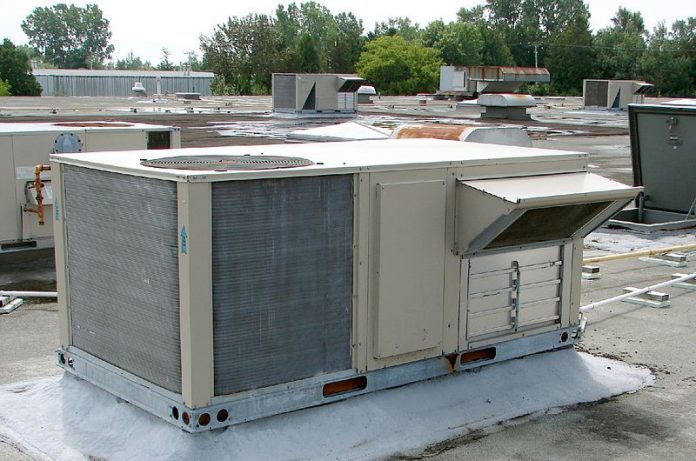The U.S. Environmental Protection Agency (EPA) rolled out a proposed rule to sharply limit the use of hydrofluorocarbons (HFCs) refrigerants.
EPA identifies HFCs as greenhouse gases contributing to global warming. In carrying out the Biden administration’s directives to reduce greenhouse gas emissions in an effort to fight climate change, on May 3, EPA proposed reducing HFCs by 85 percent over the next 15 years through and cap-and-trade scheme. Under EPA’s plan, the agency will allocate HFC permits up to a preset cap to industrial users based on past use, allowing them to sell or trade permits amongst themselves. Companies able to reduce their HFC emissions by more than their allocation could sell their excess permits to companies who needed them. The cap will decline over time, until the amount of HFCs allowed across all products are just 15 percent of current usage. EPA will issue its first set of HFC allowances for 2022 by October 1, 2021.
In public statements concerning the HFC proposal, EPA claimed cutting HFC emissions could reduce future warming by as much as 0.5℃ by 2100.
Congress Forces Refrigerant Switch
Besides the Biden administration’s climate efforts, another driving force behind EPA’s HFC regulation was a provision of the Consolidated Appropriations Act of 2021, which then-President Donald Trump signed on December 27.
The provision was co-sponsored by Sen. Tom Carper (D- DE) and John Kennedy (R-LA). Carper and Kennedy, among others in the Senate, had previously sponsored legislation forcing the replacement of HFCs with more expensive domestically produced alternatives. After their standalone legislation restricting HFC’s failed to get enough support for a vote in the Senate, they were able to attach it to the end of the year pandemic relief and omnibus spending bill.
Both lawmakers represent states where companies producing the more expensive alternative coolants are located.
The Kennedy-Carper amendment enjoyed broad support among the Democratic caucus but was opposed by Senate GOP leadership, including Senate Majority Leader Mitch McConnell (R-KY) and Sen. John Barrasso of (R-WY), chairman of the Senate Environment and Public Works Committee.
Barrasso was able to attach a provision preventing states from imposing stricter limits or shorter timelines than the federal HFC rules for a minimum of five years.
Unrealistic Estimated Temperature Impact
There is reason to doubt EPA’s claim that its proposed HFC restrictions can reduce future warming by 0.5℃.
Citing climate model projections, EPA previously estimated if every country in the world reduced their greenhouse gas emissions by the amount they agreed to under the Paris climate agreement, it would only prevent 0.17℃ degree rise in temperatures in 2100. In addition, the U.N. Intergovernmental Panel on Climate Change estimated completely banning HFC’s worldwide would prevent 0.13℃ of temperature increase through 2100, under its “business as usual” scenario.
No Basis in Reality
EPA’s claim that reducing HFCs in and of itself can prevent as much as 0.5℃ of future temperature increase, while embraced by climate alarmists, is an extreme outlier of the estimates of the impact based on a single paper in the journal Science, says Benjamin Zycher, Ph.D., a resident scholar at the American Enterprise Institute.
“The basis of EPA’s claims are described in a 2016 paper appearing in Science titled “Data Check: How a figure key to new HFC pact was born” said Zycher. “In that paper Warren Cornwall, wrote the ‘figure has its origins in a 2006 dinner held by five scientists in a village in the Swiss alps,’” Zycher said. “The underlying analysis then appeared in a paper published seven years later.
“The original paper assumed massive and exclusive adoption of HFC-equipped air conditioning in the developing world by 2050, with that equipment remaining in place through 2100,” said Zycher. “In other words, market incentives to produce cheaper, more efficient air conditioning would be ignored.”
The authors of the analysis also assumed all those demanding air conditioning would have it by 2050, which is highly unrealistic, says Zycher.
“The idea that everyone who wants air conditioning will have it by 2050 is hugely problematic, especially applied to Africa, under the premise that in 30 years, the availability of electricity will be widespread and reliable,” Zycher said. “The authors assumed any replacement equipment for existing air conditioning and refrigeration would also be charged with HFCs, thus, if you cut HFC’s you cut refrigerant related emissions.
“The EPA estimates its HFC reduction proposal would eliminate the equivalent of 4.7 million metric tons of carbon dioxide by 2050, which may seem like a lot until you put the number in context,” Zycher said. “If the entire world cut greenhouse gas emissions in half by 2050; emissions that year would be about 27 billion tons, so the effect of a 4.7-million-ton equivalent reduction would be 17 one-thousandths of 1 percent of the temperature effect—an undetectable amount.”
‘Nonsensical Notion’
EPA’s HFC phase-out is not based in sound science, says David Wojick, Ph.D., a writer for the Committee for a Constructive Tomorrow, which co-publishes Environment & Climate News. “The HFC phase-out is EPA’s first major rule based entirely on the nonsensical notion that political action can stop climate change,” Wojick said. “They are forcing out a chemical they forced in when they banned CFCs, which was even stupider.
“Even worse, they lack the accurate information needed to establish the proper baseline for allowances under this a huge cap-and-trade scheme,” said Wojick. “There may well be chaos in the numerous HFC using industries, including vital electronics and life-saving medical devices. In short this is about as bad as it gets.”
Kevin Stone (kevin.s.stone@gmail.com) writes from Dallas, Texas


























